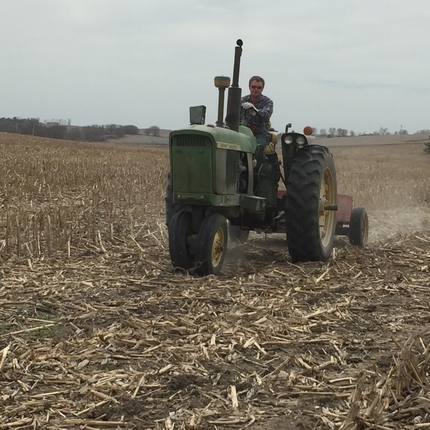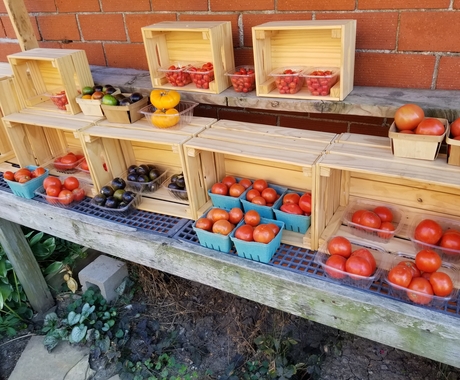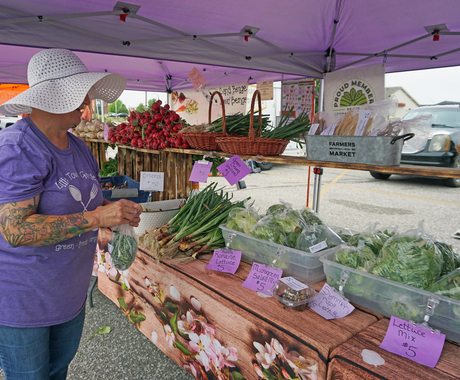The Senate passed its version of the farm bill last week, by a vote of 86 to 11. The bill included a very important improvement with the inclusion of Sen. Chuck Grassley’s (R-IA) proposals to make farm program payments fairer and close loopholes in the definition of “actively engaged in farming.” Here, we explain where we are with the farm bill and what it means for rural America.
What happened? Nuts and bolts
The Senate Agriculture Committee passed its version of the farm bill on June 13, then the full Senate took up the farm bill on the floor during the week of June 25. During the time in between, senators negotiated proposed changes – or “amendments” – to introduce, and what the content of those amendments would be. Senate leadership also discussed which amendments they would allow on the floor for a vote. You can look through the full list of amendments that were filed, and their text can be found at the Congressional Record, under the date they were filed.
Senate leadership also agreed on a list of amendments to be introduced as a package and included in the bill. On Wednesday and Thursday last week, Senators on the floor (who were under pressure to pass the bill before an upcoming recess week) took up a short list of amendments. Some received a voice vote, some a roll call vote. We’ve explained the issues below. (For those new to this process, note that less controversial issues are often passed by voice vote, while roll call votes are used for more controversial items). After working through the short list of amendments, Senators voted on the full bill, which passed 86 to 11.
The next step on the path to the farm bill is a conference committee between the Senate and House to address the differences between the bills.
Structure of agriculture – battle won, war not over
The Center for Rural Affairs is proud to have a long track record of work on issues intrinsic to the structure of agriculture. Our guiding principle is that consolidation in agriculture has undermined rural towns across the Midwest, and public policies that subsidize consolidation do not belong on the books. Strong and real limits on the amount of government payments that individual operations can access is fundamental to fostering fairness in agriculture. Exploitable loopholes in commodity payment programs and unlimited crop insurance subsidies are two major weaknesses in our agricultural programs that allow taxpayer dollars to drive farm consolidation.
In last week’s debate, several Senators brought forward proposals to address these unfair policies. Sen. Grassley has been a champion of fixing egregious loopholes in farm programs by strengthening the definition of “actively engaged in farming,” which we elaborate on here and here. In 2013, Sen. Grassley successfully passed his proposals through the House and Senate; however, they were removed when the bill went to conference negotiations for the final 2014 farm bill.
This year, Sen. Grassley’s proposals were included in the package of amendments that was passed by voice vote on the Senate floor. Their inclusion is tantamount to a stamp of approval from Senate leadership – a HUGE win!
But, the fight isn’t over. We will closely follow the status of this proposal as the bill moves to conference. The House version of the farm bill proposes to take several steps back and open new loopholes for payments. So, stay tuned.
Fairness in crop insurance and other structural issues ignored
Unfortunately, other proposals to bring fairness to the structure of agriculture are not won yet. Most disappointingly was the fate of Sen. Durbin’s amendment. Sen. Durbin, along with Sens. Grassley, Flake, Shaheen, McCain, Warren, and Lee, filed an amendment to introduce common sense limits on crop insurance premium subsidies. The proposal was to reduce the amount of crop insurance premium subsidies going to producers with an Adjusted Gross Income of more than $700,000.
Unfortunately, we will never know how this amendment would have fared, because it was not allowed to the Senate floor for a vote.
Another proposal in the final Senate bill is to significantly raise Farm Service Agency’s limits on the size of loans allowed under their direct and guaranteed loan programs. However, these proposed changes did not include a request to increase funding for loans. We are concerned the largest operations would apply for and receive a few large loans, and the available loan funding would be claimed more quickly and run out, leaving beginning and socially-disadvantaged producers unable to access credit from the Farm Service Agency. Since we know this credit is a significant and valuable resource for beginning and socially-disadvantaged producers, we are concerned these proposals have made it to the final Senate bill.
The fight continues. Onward, friends.
State of conservation and rural development programs
Conservation proposals from the Senate Agriculture Committee stayed largely unchanged as the Senate version of the farm bill moved onto the floor last week. One approved amendment was from Sen. John Thune (R-SD) to expand grazing and haying on land under Conservation Reserve Program contracts, with limitations on those activities to protect wildlife and other natural resources.
The Senate committee’s proposal to cut funding for the Conservation Stewardship Program from 10 million acres enrolled per year down to 8.8 million acres remains in the final Senate bill.
In addition, the Rural Microentrepreneur Assistance Program (RMAP) remains unfunded in the Senate bill. This program allows community organizations to provide loans and technical assistance to rural entrepreneurs. RMAP supports small businesses in rural areas where they are sorely needed. The Center for Rural Affairs, for example, has been able to leverage this program to help several small, rural businesses expand through job creation and business planning. Congress should renew this funding at $3 million per year in the final farm bill.
Finally, the committee’s proposals to consolidate and preserve several programs that serve beginning farmers and ranchers and facilitate rural development were left unchanged and remain in the bill. One proposal aims to merge the Beginning Farmer and Rancher Development program with the 2501 program. A second proposal would merge the Value-Added Producer Grant Program with the Farmers Market and Local Food Promotion Program.
Looking ahead to conference
There are major differences between the House and Senate bills in regards to the structure of agriculture, conservation, and beginning farmer and rancher and rural development programs. The House version opens loopholes in commodity payments, while the Senate would close them. The House bill would eliminate the Conservation Stewardship Program, while the Senate would cut its funding from 10 million acres down to 8.8 million. The House voted to eliminate funding for several programs that provide vital support for beginning farmers and ranchers, while the Senate voted to preserve and, in some cases, merge those programs.
We will continue to work for the best farm bill possible for rural America. We look forward to working with you.




